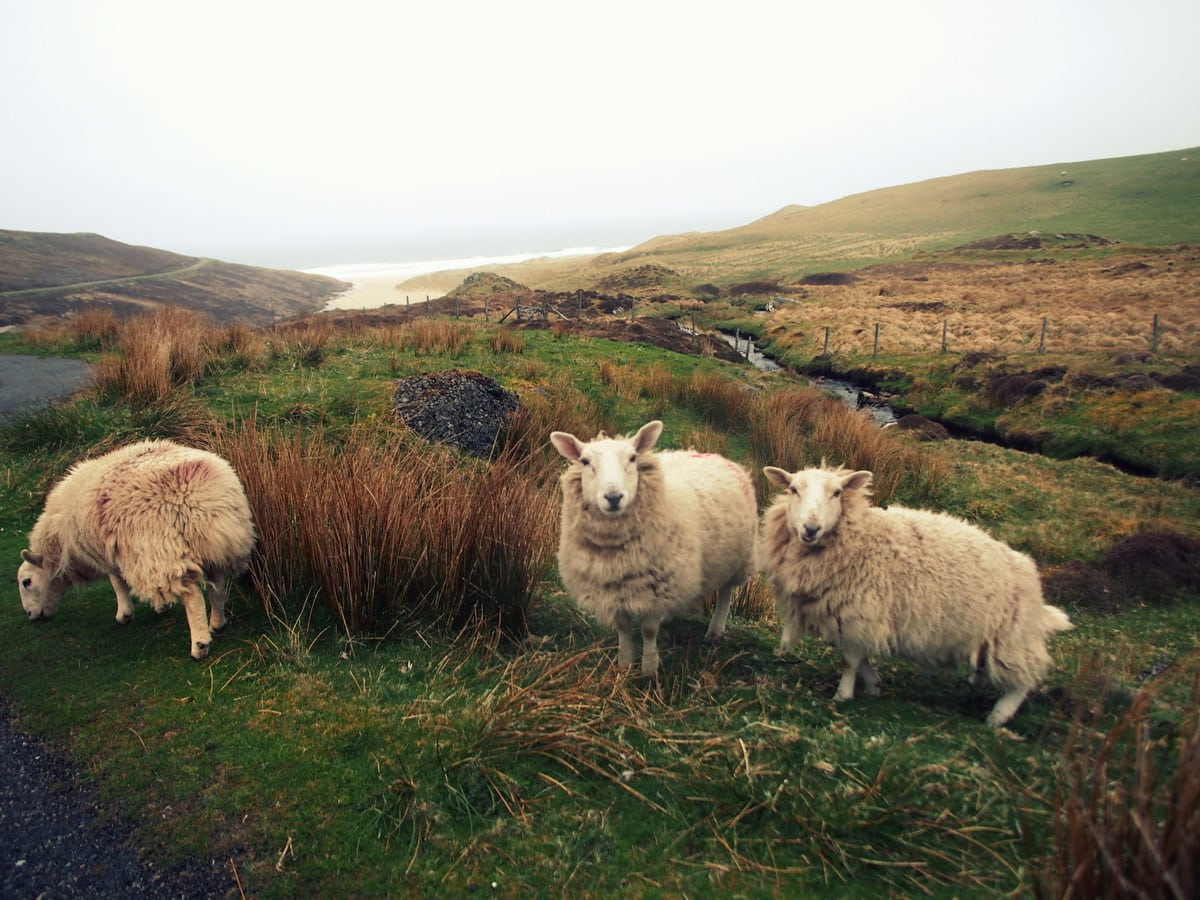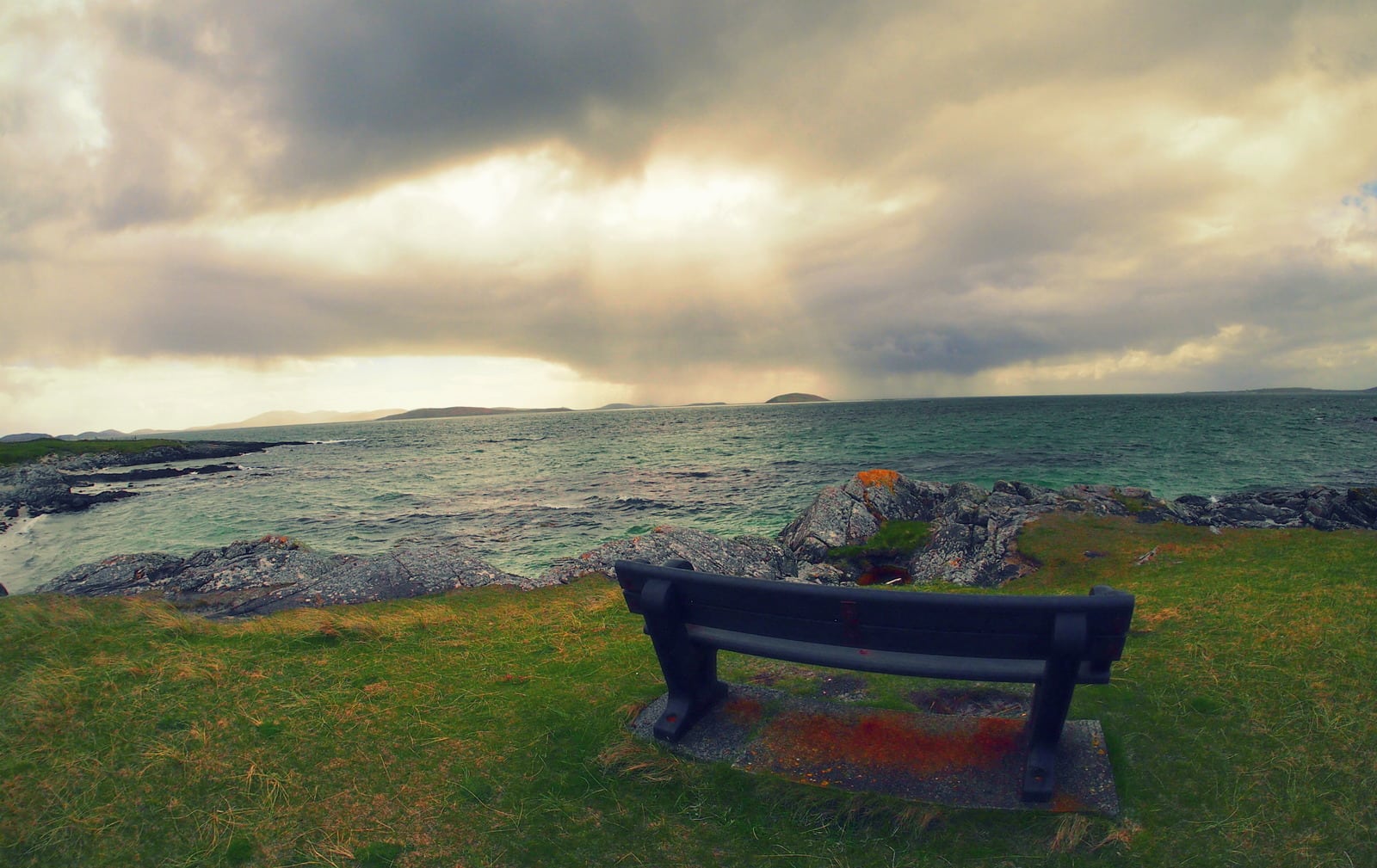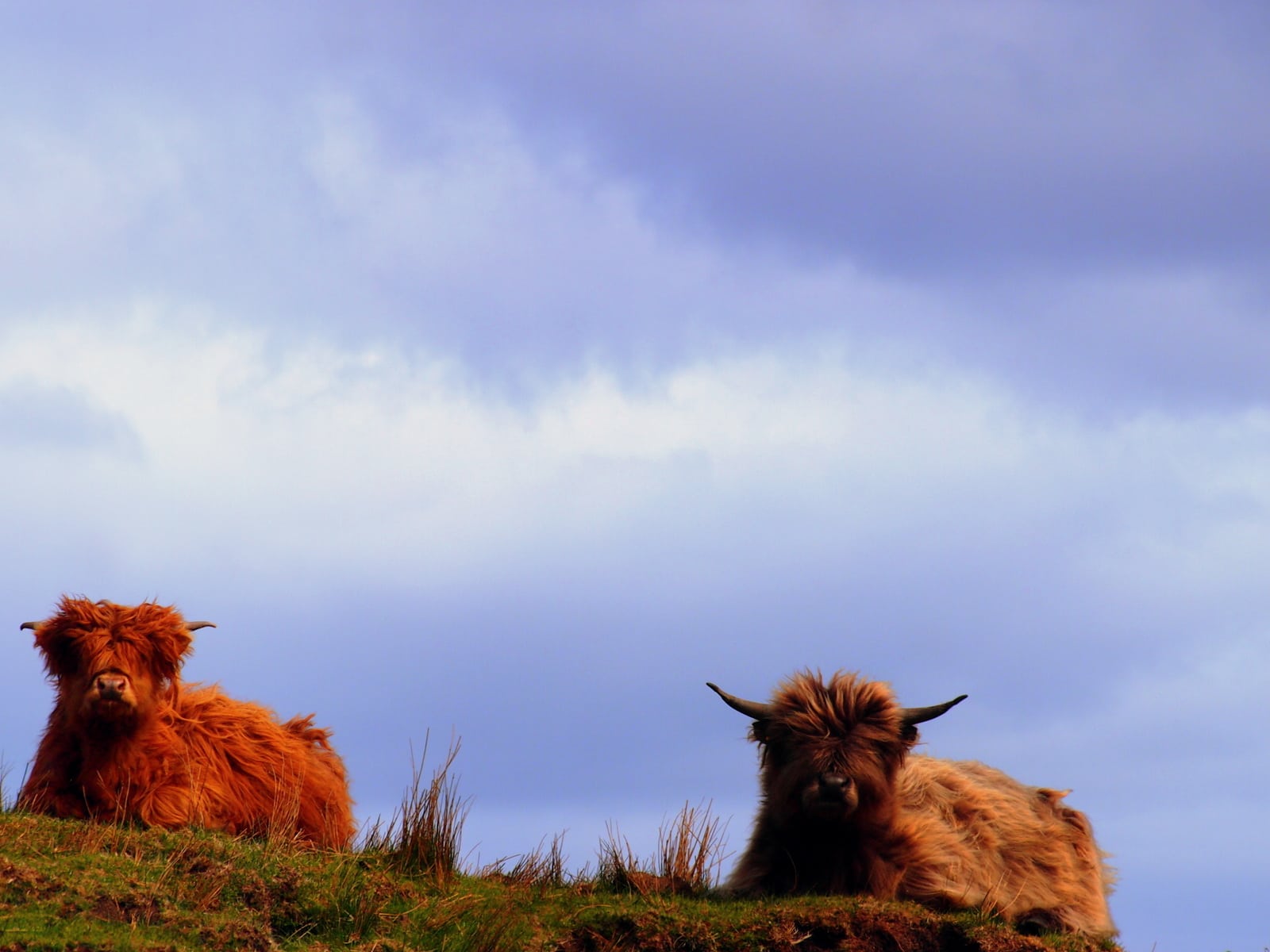Skift Take
Too bad Scotland doesn't do enough to promote these islands....
Imagine remote windswept islands, valleys upon valleys filled with placid lakes, football fields upon football fields of completely empty white sand beaches and cerulean waters of the ocean surrounding it. Now picture them strung high up in the North Atlantic. With more sheep than humans.
Maybe it was the cognitive dissonance, maybe it was the word “Outer” that stuck with me, or maybe it was the fact that I love beaches but can’t really swim. Whatever it was, I went to the Gaelic islands of Outer Hebrides three years ago, kept dreaming about it, and went back again last month.
The Outer Hebrides, a group of 15 inhabited islands off the west coast of Scotland, are sometimes confused with the more glamorous cousin Isle of Skye, but they’re nowhere near as high-profile and are certainly more laid-back. Most travelers visit the northern Isles of Lewis and Harris and the southern part of North Uist and South Uist, separated by an hourlong ferry ride.
Getting to the islands is part of the charm, with a few circuitous routes as options. When I first went three years ago in summer, it was a mix of flight, rail and ferry, an experience in itself. Flying into London, I took the train to Edinburgh and then in a few leisurely days, I made my way through several trains (Scotland by rail, a languid experience in itself but a topic for another post) to the resort town of Oban on the west coast of mainland Scotland. From there, the 8-hour ferry to the small town of Lochboisdale on South Uist prepares you mentally for the slowness of Hebrides ahead.
The faster option, which I tried last month, is flying into Glasgow directly from NYC and then taking the one-hour flight in a tiny 34-seater to the northern town of Stornoway, the largest in Outer Hebrides. There are two other airports on the islands: on Benbecula and the wildest one of all, on Barra, where the landing and takeoff happens from the the flat sand beach!
Isle of Harris (yes, the famous Harris tweed gets its name from here, made and sold everywhere in Harris and Lewis) is the most impressive of all Outer Hebrides islands, with high mountains with passes, giant flat white-sand beaches, and moon-like rugged landscapes. Lewis is mostly flat and desolate with undulating peat bogs, great beaches and rugged coastline. The Uists are even slower, with lots of lakes (called Lochs) and peat bogs.
9 Things That You Notice Right Away in the Outer Hebrides:
- The gusty wind is your constant companion but with the right windbreaker/rain jacket, you’ll be fine on most days.
- Since the landmass here is small, the skies dominate in all ways, from weather to vistas.
- Everything is slow here, from the speed at which you drive (in case you hit the sheep in the middle of the road) to the service and how people talk and interact, in no hurry to get anywhere. Everything shuts down in the evening and on Sundays (I learned this one by trial and error with a dinner of toast and cheese the first night I landed on Hebrides).
- The islands look different every day, due to changes in weather and light patterns, from stark and foreboding to lush, tranquil and bright.
- The single lane roads means, at times, only one car can pass through. Lots of passing nooks/places are built, and everyone hand waves as they pass you, which is a delight in itself for a hardy New Yorker like me.
- In summers, it stays light out till very late. By mid-summer, there are only about two hours of darkness, which means you can explore lots in a short time.
- The giant beaches on Harris and Lewis are almost like salt flats, and the water is the bluish-green transparent color you’d find when vacationing on islands in the Indian Ocean. The difference here is that the water is cold, though you can easily swim with a full-body wetsuit in peak summer.
- Everything’s indie here, not because the islands have some back-to-old-times artisanal nature, but that’s how they always were. Except for the lone Tesco in Stornoway, there are no chain stores, no chain hotels. With the surfeit of mom-and-pop B&Bs, I made it a point to only stay in B&Bs. Every experience was friendly, warm and cozy—every cliched image of B&Bs come true. Calling to book is the norm here, so don’t bet on online booking, though TripAdvisor does have all listings for the islands.
- Emptiness. That’s why I went in the first place, and why I went again this year. You could go to the beaches on a summer evening when the light is still out, run around for miles, and not run into anyone.
- Oh, the phone signal is only a suggestion, it may work, most of the times it may not, especially in between towns and villages. All of the hotels & B&B have good and free wi-fi, so that makes up for some of the disconnecting.
If You Go:
During my two trips, I stayed for more than a week each time but in keeping with the pace of the Isles, two weeks would be the perfect length. Anytime between June and early September would be the best time to go. The best way to get around is renting a car. Even though you drive on the opposite side of the road, the one-lane roads don’t present any major acclimation challenges except, well, sheep and steep mountain valley curves at times. The ferries are big enough that you can drive on with your car and use across the islands.
Some must-sees and must-dos, according to my own quirky travel sense:
- Callanish Stones on Isle of Lewis: the less famous cousin of the Stonehenge stone circles, with lot fewer visitors of course, but no less impressive.
- The sand dunes and beaches of Uig, on Lewis’s west coast. These sand dunes, which wouldn’t be out of place in a desert, are inhabited by millions of rabbits!
- Almost as important as the sights is a stay at the Auberge Carnish hotel cottages, a bit out of place with their design-forward Scandinavian look but with an amazing location by the Ardroil beach by the Uig Sands. Richard, the French chef/owner, cooks up some amazing meals completely out of place in these regions. It’s worth it to drive out here just to have dinner if you’re not staying at the cottages.
- The drive from Lewis to north Harris, over the high mountains is best done slowly, taking in the views.
- In Harris, the huge beaches and cliffs are meant for walking, and that you should do a lot. The beaches of Luskentyre, Seilebost and Scarista will stay imprinted in your brains forever, for the size and for the surroundings.
- Isle of Eriskay, further south from the Uists, has the edge-of-the-world feeling, more so than other islands. It’s worth going for that.
- The wildlife and animals are everywhere, from the ubiquitous sheep to Highland cows, to seals and otters to deers if you are lucky. Then there are the puffins and eagles if you travel enough, and if you travel out to the ocean, dolphins and whales.
- Go to the Kildonan Cafe in South Uist for the soup. Really, just for the soup. The simple tomato basil is like heaven in a bowl.
- For the most adventurous, there is the day trip on a boat cruise to St Kilda, the really isolated archipelago 40 miles further west of North Uist in the North Atlantic Ocean. It used to be inhabited until 1930, but the harsh living conditions facing the open ocean meant it was barely subsistence living. After 1930, the meager population of less than 100 inhabitants were moved over the mainland. Now, St Kilda is a World Heritage site, with two rare kinds of sheep, a small military base, and volunteers to maintain the museum. The naturalist James Fisher wrote this about St Kilda in 1947, which still rings true: “Whatever he studies, the visitor to St Kilda will be haunted for the rest of his life by the place, and tantalised by the impossibility of describing it to those who have not seen it.”
More Travel Resources:
- The Internet Guide to Scotland has been running since 1996, and it is a delightfully quaint but completely up-to-date directory of all things Scotland, but especially the Hebrides.
- PhotoTravelReview’s visit to the Outer Hebrides is great for photo enthusiasts.
- The Telegraph has a good collection of articles on the islands, starting with the ones listed at the end of this article about tourism in Hebrides.
The Daily Newsletter
Our daily coverage of the global travel industry. Written by editors and analysts from across Skift’s brands.
Have a confidential tip for Skift? Get in touch



